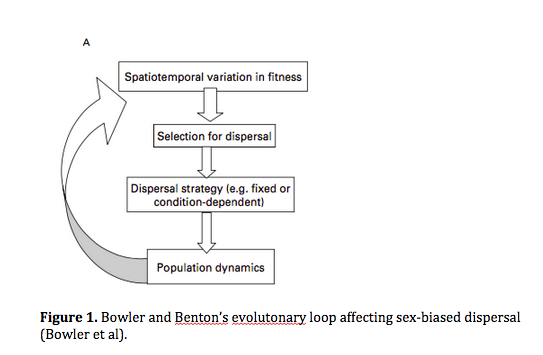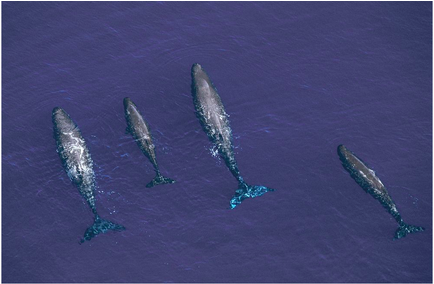Marine Animal Sex-Dispersed Migration Behavior
Biology 342 Fall 2015
Margalit Leiser and Jaelin Cola
Phylogeny

Evolutionary Change in Behavior
Bowler and Benton state that, “Variability in an individual’s fitness between habitat patches is key to the evolution of dispersal”. As a result, sex-biased dispersal evolved in mammals to solve the following problems: Inbreeding and cost of dispersal (Bowler et al).
Inbreeding affects the decision for sex-biased dispersal through coancestry. Coancestry is defined as “the probability that two copies of a gene, randomly selected from a subpopulation, are identical by descent” (Perrin et al). Coancestry between mating partners can cause inbreeding since kin tend to cluster around their birth site, which could result in a loss of fitness for the species (Bengtsson).In addition, coancestry implies competition between members for mates as well as competition between kin for resources, both of which reduce inclusive fitness (Taylor). To avoid these problems, mammals began to disperse to enhance breeding opportunities and thus increase their inclusive fitness (Hamilton et al).
A third mechanism that favors the evolution of sex-biased dispersal is the presence of an asymmetry in the costs associated with dispersal between the two sexes. Studies show that the sex that disperses is the one with the lowest cost associated with their dispersal (Gros et al). The predominating social organization in whales is female philopatry and male dispersal, although the reverse does occur (Greenwood 1980).
Sex-biased dispersal in whales is similar to dolphins, sharks, and manatees in that it involves female philopatry, where females remain in their breeding sites, and male dispersal, where males venture far beyond their breeding site to breed elsewhere. Studies have shown that sex-biased dispersal influences the genetic structure of sperm whales, specifically the maternally inherited mitochondrial DNA. 
Scientists identified this by looking at both the mitochondrial DNA and the biparental nuclear genome of sperm whales, only noticing differences in the maternally inherited mitochondrial DNA. In fact, scientist looked at the variation in the mitochondrial DNA of whales between social groups and found significant heterogeneity between groups, indicating genetic diversity between populations of whales. (Lyrholm et al).
The variation in the maternally inherited mitochondrial DNA as well as differentiation from nuclear DNA between populations of whales exemplifies how sex-biased dispersal has evolved to increase reproductive fitness. The variation of the biparental nuclear and maternally inherited mitochondrial DNA experienced as a result of sex-biased dispersal inhibites inbreeding depression amongst groups of whales by altering the genomics within the species (Gros et al).
Genetic variation within whales between populations reduces kin competition by increasing nonsibling competition. Hamilton's rule proposes the following on kin selection: "selection will depend on the balance between the inclusive fitness benefits of the trait and the direct fitness costs to the individual" (Hamilton). Hamilton states that as local populations become larger and most of the competitive interactions occur between non-kin, the evolutionary stable dispersal rate is zero, thus equal on both sides (Bowler et al).